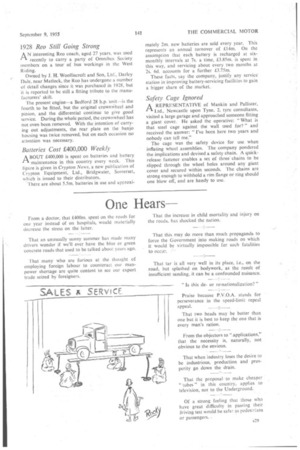One Hears—
Page 31

If you've noticed an error in this article please click here to report it so we can fix it.
From a doctor, that £400m, spent on the roads for one year instead Of on hospitals, would materially decrease the stress on the latter.
That an unusually sunny summer has made many drivers wonder if we'll ever have the blue or green concrete roads that used to be talked about years ago.
That many who are furious at the thought of employing foreign labour to counteract our manpower shortage are quite content to see our export trade seized by foreigners. That the increase in child mortality and injury on the roads, has shocked the nation.
That this may do more than much propaganda to force the Government into making roads on which it would be virtually impossible for such fatalities to occur.
That tar is all very well in its place, i.e., on the road, but splashed on bodywork, as the result of insufficient sanding, it can be a confounded nuisance.
"Is this deor re'-nationalization? " — Praise because P.V.O.A. stands for perseverance in the speed-limit repeal appeal.
That two heads may be better than one but it is best to keep the one that is every man's ration.
From the objectors to ",applications," that the necessity is, naturally, not obvious to the envious.
That when industry loses the desire to be industrious, production and prosperity go down the drain.
That the proposal to make cheaper " tubes" in this country, applies to television, not to the Underground.
Of a strong feeling that those who have great difficulty in passing their driving test would be safer as pedestrians or passengers..




























































































